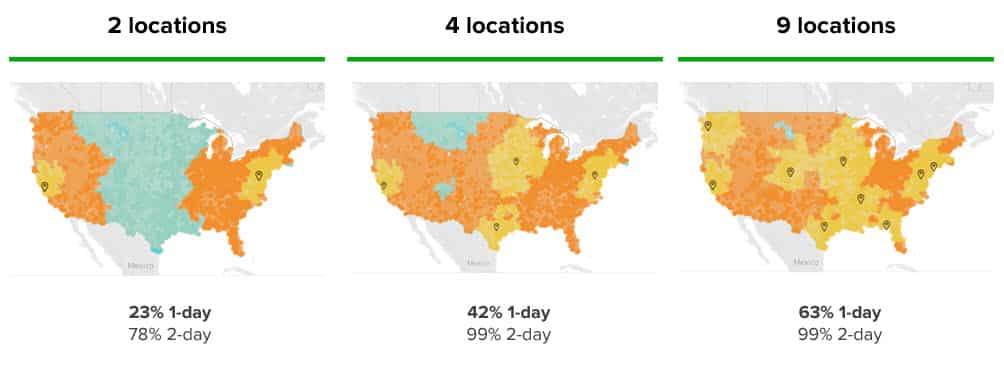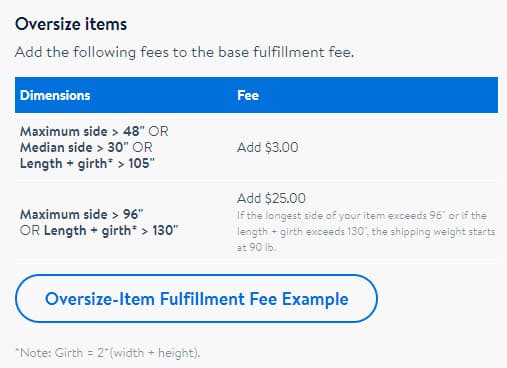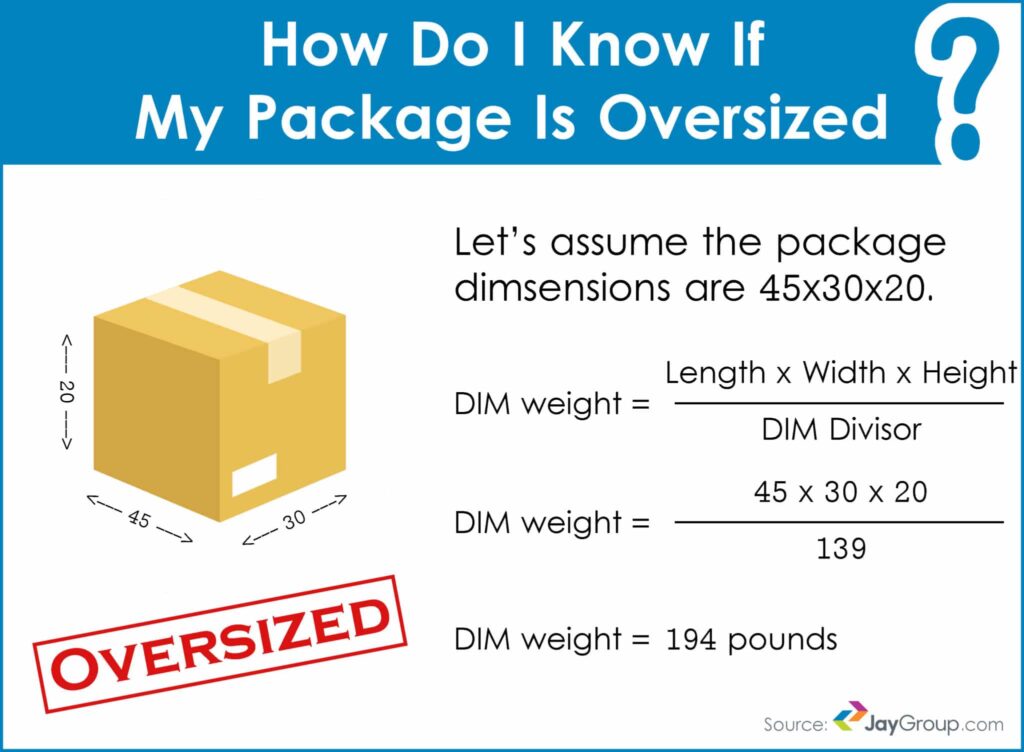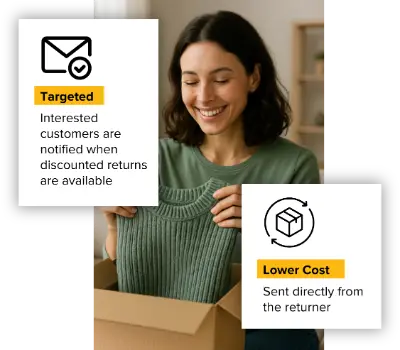The Best Way to Ship Heavy Items: How to Maximize Your Profit

Last updated on February 24, 2025

If you’re shipping large items, then you know the pain of high storage, handling, fulfillment, and especially shipping costs eating up your margin. While you’ll always pay more to ship a chair than a pen, you shouldn’t resign yourself to eating sky-high rates. With higher shipping costs come larger opportunities to save money; cutting a few dollars of cost off of each order goes straight to your bottom line.
In this article, we’ll cover three of the top ways that you can reduce your cost while shipping heavy and/or large items. Implement them and watch your profit jump and headaches melt away!
Understanding Heavy Item Shipping
Heavy item shipping refers to the transportation of goods that exceed standard weight and size limits. These items require specialized handling, equipment, and logistics to ensure safe and efficient delivery. Whether you’re shipping industrial machinery, medical equipment, or large furniture pieces, understanding the nuances of heavy item shipping is crucial for minimizing costs and maximizing efficiency.
Heavy vs Large Packages
First, we need to make a distinction between heavy and large items. Often large items are heavy, and heavy items are large, but that’s not always the case. When you ship heavy packages, it’s crucial to understand the specific rules, limitations, and pricing options of different carriers to ensure shipping cost-effectiveness and compliance. Improper shipping and handling can also include additional surcharges, double penalizing shipping heavy items. Shipping carriers have specific guidelines and weight thresholds that classify items as heavy, and understanding these definitions can help you choose the right shipping method and carrier.
Definition of Heavy Items in Shipping
Carriers define packages as Heavy if the package weighs more than their normal weight range. For example, UPS charges additional fees for packages weighing more than 70 lbs (31.75 kg), and their maximum allowed parcel weight is 150 lbs.
Definition of Large Items in Shipping
Carriers define packages as Large if the package’s size is more than their normal allowed size range. For example, FedEx’s Large package size starts at a girth greater than 130 inches, and their maximum allowed package length + girth is 165 inches.
Types of Heavy Items
Heavy items typically include furniture, machinery, tools, and other items made of wood or metal. These are typically bulky goods that require special handling and care.
Importance of Proper Shipping for Heavy Items
Proper shipping of heavy items is crucial to ensure safe and efficient delivery. Improper handling and transportation can result in damage to the goods, injury to handlers, and increased shipping costs. Choosing a reliable shipping carrier that specializes in heavy item shipping and follows strict safety protocols is essential. By investing in proper packaging, using heavy-duty packing tape, and selecting the right shipping method, you can minimize risks and ensure your heavy items reach their destination in perfect condition.
Let AI Optimize Your Shipping and Boost Profits
Cahoot.ai software selects the best shipping option for every order—saving you time and money automatically. No Human Required.
See AI in ActionFreight (LTL) Shipping Options
Freight shipping is a cost-effective way to transport heavy items over long distances. There are several freight shipping options available, each offering unique benefits and services tailored to meet the needs of shipping large and heavy items. For items that are too heavy to ship via parcel, freight shipping is the best option.
Overview of Freight Shipping Services
Freight shipping services offer a range of benefits, including:
- Cost-effectiveness: Freight shipping is often cheaper than parcel shipping for heavy items. By consolidating shipments and using specialized equipment, freight carriers can offer competitive rates for transporting large and heavy items.
- Flexibility: Freight shipping services can accommodate a wide range of goods, including oversized and heavy items. Whether you’re shipping machinery, equipment, or furniture, freight carriers have the expertise and resources to handle your shipment.
- Reliability: Freight shipping services provide tracking and monitoring to ensure safe and efficient delivery. With advanced logistics and real-time tracking, you can stay informed about the status of your shipment and ensure it arrives on time.
Some popular freight shipping services include:
- DHL Freight: Offers a range of freight shipping services, including ocean freight and air freight. DHL Freight specializes in international shipping and provides comprehensive solutions for transporting heavy items across borders.
- UPS Freight: Provides freight shipping services for heavy items, including machinery and equipment. UPS Freight offers a variety of shipping options, including LTL (less-than-truckload) and FTL (full-truckload) services, to meet your specific needs.
- FedEx Freight: Offers freight shipping services for heavy items, including furniture and oversized goods. FedEx Freight provides reliable and efficient shipping solutions, with options for expedited and standard delivery.
When shipping heavy items, it is essential to choose a reliable freight shipping service that meets your specific needs and budget. Be sure to compare shipping rates, weight limits, and express services to find the best option for your heavy item shipping needs. By selecting the right freight carrier, you can ensure your heavy items are transported safely and cost-effectively.
ShipStation vs. Cahoot: 21x Faster, Real Results
Get the inside scoop on how a leading merchant switched from ShipStation to Cahoot—and what happened next. See it to believe it!
See the 21x DifferenceDistribute Inventory to Reduce Shipping Zones
To state the obvious, the farther you’re sending a package, the more you’ll be charged. Within the continental United States, shipping distance is governed by Zones. Short trips will be designated Zone 2, while shipping something across the country will usually be designated Zone 8.
If you’re fulfilling out of just one warehouse, you have no choice but to routinely ship to Zones 5 and up, which is especially costly with large or heavy packages. Even with two warehouses, much of the country will be outside of the low-cost Zones 2 & 3.
The simple trick is to ensure that you always have inventory close to the customer so that every shipment originates from Zone 4 or less; many call this a “distributed fulfillment strategy”. It requires 3 to 4 fulfillment locations strategically placed throughout the United States. Cutting your average shipped-to zone will drive savings straight to your bottom line.
Distributed fulfillment also comes with the enormous added benefit of enabling fast ecommerce order fulfillment – after all, if your product isn’t shipping far, then it won’t take more than 1 or 2 days to get to the customer. You can stop worrying about using extremely expensive services such as UPS 2nd Day Air and pay ground rates for customer-pleasing fast delivery.
This simple principle, though, is anything but simple in execution.

Based on Ground Shipping speeds
If you already have one warehouse, then it can be tempting to take it upon yourself to open 1-2 more US fulfillment centers across the country. While maintaining control of your customer experience is appealing, there’s never been a worse time to try to stand up merchant-operated fulfillment. Warehouse rents are at record highs, and Amazon has pushed the cost of labor as high as $29.00 per hour.
If you’re a marketplace seller, then you may already be using Amazon and Walmart’s in-house fulfillment networks; Amazon FBA and Walmart Fulfillment Services. These services will solve the distributed inventory challenge for you and enable fast shipping, but they also come with significant drawbacks. They’re designed for small products, so they both significantly raise prices for large items. Walmart, for instance, charges all items with a side length of over 96 inches or a combined length and girth over 130 inches as at least 90 lb no matter their actual weight, and then they add a $25 surcharge to boot. Additionally, they’ll only solve your fulfillment needs for the marketplace itself. Amazon FBA’s multi-channel solution, Amazon MCF, is significantly more expensive than FBA, while WFS only works for Walmart orders.

Your last option is to outsource fulfillment to one 3PL with national fulfillment services, or to multiple single-location 3PLs. The best 3PLs will have 10 or more locations across the United States, so they can strategically place your inventory in the perfect position for your customer base. Modern 3PLs designed for ecommerce also have built native integrations with all major marketplaces and shopping carts, so you can use one provider for all of your fulfillment needs. Fulfillment costs will vary between 3PLs, though, and not all of them can meet the strict SLAs needed to win the Buy Box on every marketplace. Be sure to use something like a 3PL request for proposal (RFP) template to get an apples to apples comparison.
Ship Heavy Items with the Right Carrier
Not every carrier is created equal when it comes to shipping heavy items, and relatively small adjustments in your package size and weight can have big implications when it comes to choosing the most cost-effective option.
FedEx’s guidelines on how to ship oversize items detail that they add an oversize shipping fee when packages have a girth of more than 130 inches. Note that if a package is over 150 lbs, or if its combined length and girth is more than 165 inches, then FedEx will classify it as freight and apply a completely different set of rules.
UPS governs its large items a bit differently. It will designate a package as “Over Maximum Size” when its length plus girth combined exceeds 165 inches, and charge additional fees. UPS charges additional fees for packages over 70 lbs and has a maximum package weight is 150 lbs.
Finally, USPS is less equipped to ship large packages, and thus has more restrictive rules. Their maximum size for most mailpieces is 108 inches in combined length and girth, but USPS Retail Ground has a slightly larger allowance of 130 inches. Regardless of size, the maximum mailable weight of any mailpiece sent through USPS is 70 lbs. Packages that are between 108 and 130 inches in combined length and girth are subject to a special oversized price on USPS.
These guidelines leave wiggle room for savvy merchants to optimize their shipping costs. Note that FedEx’s oversize charge only kicks in on packages with a girth of more than 130 inches, while UPS and USPS have lower limits. On top of that, the latter two’s limits are based on combined length and girth. If your package fits under FedEx’s bar for oversize, but over the bars for the other carriers, then you know that you can avoid surcharges by shipping with FedEx.
You can take it upon yourself to negotiate with the carriers separately, or if you’re using shipping software like ShipStation, you can set manual rules and rate shop to scrutinize your orders for the best rates. On the other hand, our next-gen shipping software will do the hard work for you by automatically comparing major and regional carriers against each other for each order. Without any manual intervention, the software will take quirks like differences in surcharges into account and ensure that you’re getting the best deal, every time.
Optimize Package Size
Small changes in package size can make a big difference to your final shipping cost. When you’re shipping large and oversize items, every additional pound usually adds $0.30 – $0.50 to your cost, which adds up quickly!
Package size matters because of Dimensional Weight, or DIM weight for short. Major carriers introduced DIM weight around 2015 as a way to charge more for bulky, yet light products. The calculation is fairly simple: DIM weight is equal to L x W x H of your package, divided by 139 (166 for USPS). If the resulting number is larger than the weight of the package in pounds, then the shipping weight used to calculate price will be elevated to the DIM weight.

In this way, inefficiencies in package design quickly add up to boost your shipping cost to well more than it should be.
Consider a package that is 24 x 24 x 24. This 2 ft cube package’s DIM weight is 99.45 lbs. If you’re shipping two pillows in that package, the actual weight is probably less than a tenth of the DIM weight. In that scenario, DIM weight increases your cost by $30 or more! What if you could shave 4 inches off one of the sizes by more efficiently compacting your pillows?
Those 4 simple inches cut the DIM weight all the way down to 82.88 lbs, a nearly 20% reduction. That package would fall into FBA’s “Medium oversize” category, with a shipping weight between 70 – 150 lbs. FBA’s fulfillment fee rises by $0.44 for each pound in that category, so shaving the 4 inches off of one side of the package would save you over $7 per order.
Cut Costs with the Smartest Shipping On the Market
Guranteed Savings on EVERY shipment with Cahoot's AI-powered rate shopping and humanless label generation. Even for your complex orders.
Cut Costs TodayCahoot Ships Heavy Items at Low Cost
Cahoot’s nationwide network of over a hundred warehouses provides affordable national ecommerce order fulfillment for ecommerce merchants.
We cover each of the three key pillars of reducing the shipping cost of heavy items for you:
- We’ll strategically distribute your inventory to 4+ locations
- Our next-gen shipping software automatically finds the lowest cost shipping label that meets your delivery SLA
- We work with you to shrink package size
Unlike other providers, Cahoot also has the flexibility to work alongside existing merchant-owned warehouses (if you have them). We know that many merchants with oversize goods carefully manage fulfillment themselves due to how difficult the process can be. Cahoot will analyze your existing network and customer base, then add a few locations of our own to seamlessly extend your network into a nationwide footprint.
With this approach, you can continue to get value out of your existing assets while delighting your customers and your bottom line with affordable fast shipping.
Getting started with Cahoot is fast and easy – with pre-built integrations for major ecommerce channels like Amazon, Walmart, Shopify, and BigCommerce, we can get merchants started in as little time as it takes to send us your inventory.
Talk to one of our experts today and explore how we can be the key that unlocks the next level of your profitable ecommerce growth.
Frequently Asked Questions
What is the cheapest way to ship heavy items?
This depends on the size of the item. For smaller items, USPS Priority Mail can be cost effective, and for larger items, UPS or FedEx is usually cheaper.
Are there any special instructions when shipping heavy items?
Heavy items can do more damage when moving in transit; proper packaging and dunnage help keep heavy items protected in shipping.

Turn Returns Into New Revenue


 12 minutes
12 minutes


